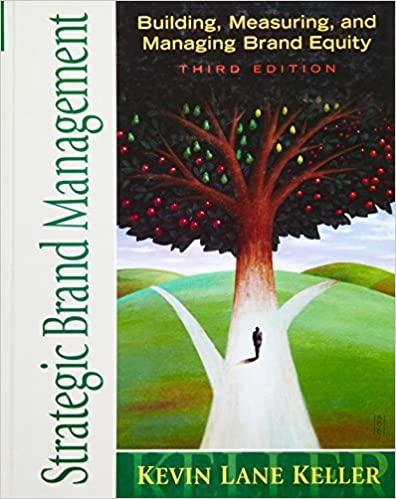Answered step by step
Verified Expert Solution
Question
1 Approved Answer
Case Study details: This case study supports the CLO 9 and should be analyzed in your respective groups. This is the Case Study # 2
Case Study details: This case study supports the CLO and should be analyzed in your respective groups.
This is the Case Study # information. Please ensure that your submission have the following information
Cover Page
Introduction to tell the overview of the Case.
Body at least pages responding to the questions
Conclusion
References. if you got help from any external sources you must give references
Submission must be double spaced and size font, style Times New Roman.
MasterTag Case
When MasterTag was founded in its founder, Ludwig Schmidt, set out to be a manufacturer of plastic fishing bobbers. Then, in Schmidt was approached by a local greenhouse owner and was asked if he could produce a line of horticultural labels for plants. At the time, these labels were made of wood. Schmidt adapted his machines to produce these labels. Later, plastic replaced wood and he has been manufacturing the plastic "tags" for plants ever since. Over the years, the labels have increased in quality and now feature fullcolour pictures of the plants along with the name and planting and care instructions.
Many of MasterTag's largest customers are seed companies that sell their seeds to commercial growers. The large seed companies typically place one or two large orders with MasterTag at the beginning of the growing season. The seed companies then sell their seeds and the labels to their customers who grow the plants and sell them to the end consumer. The seed companies do not like ordering tags, but do so because their customers demand labels with their seeds.
There are several problems with this ordering process. The main issue stems from the fact that the exact quantities of tags that will be needed is difficult to predict due to possible crop failures and the introduction of new items. To avoid a shortage of tags, seed companies order and ship a large quantity of tags to their customers. Seed companies usually end up each year with huge numbers of leftover tags. In fact, MasterTag's largest customers often end up with millions of leftover tags.
When MasterTag's management became aware of all the unused labels and unhappy growercustomers, they decided they must come up with a better solution for achieving a match between supply and demand of the tags. One possible solution would be to make an initial, fairly large batch, which would be produced and shipped directly to the growers instead of the seed companies, as is now being done. Later, when the grower results became available, a second batch would be produced using information from growers on how many additional tags were needed. The second batch would then be shipped to the growers. See figure for Before and After.
Questions:
Explain the key benefit of the revised approach, and the reason for the benefits
MasterTag has not yet decided to implement this plan. List the pros and cons you thin should be considered.
Step by Step Solution
There are 3 Steps involved in it
Step: 1

Get Instant Access to Expert-Tailored Solutions
See step-by-step solutions with expert insights and AI powered tools for academic success
Step: 2

Step: 3

Ace Your Homework with AI
Get the answers you need in no time with our AI-driven, step-by-step assistance
Get Started


